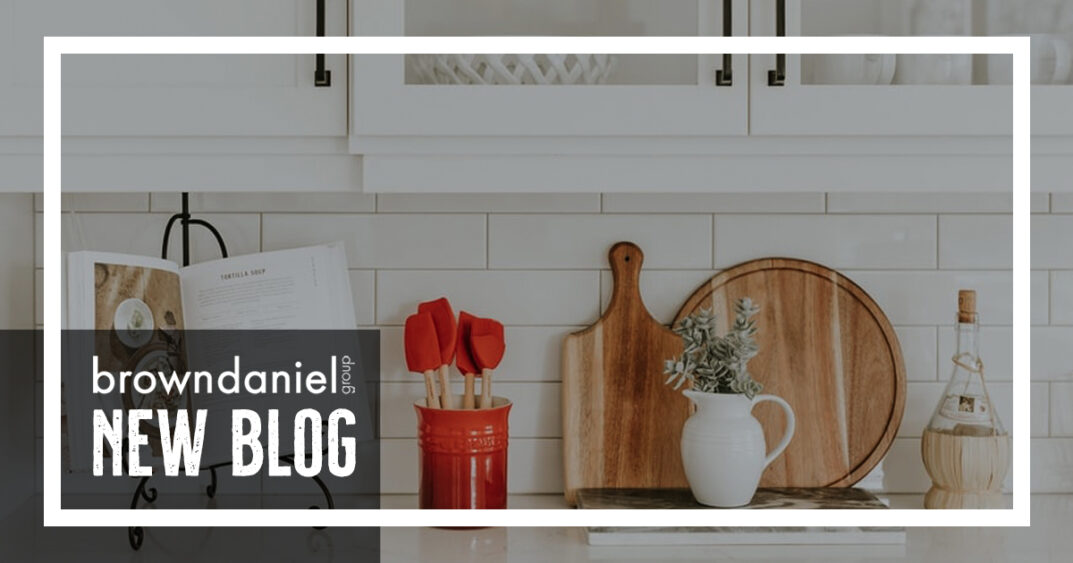
There’s no denying the long term effects the Coronavirus pandemic has had on every aspect of our lives. From how and where we work to how, and whether, we shop and dine out, many of us had to make sweeping changes in our day to day lives. For months on end we longed to have everything go back to normal, but as it turns out, many of these changes will stick with us for the long haul, such as how we design and decorate our homes. The ultra modern aesthetics that had begun to rise in popularity a few years ago are giving way to a cozier and more personalized style, particularly in our homes’ common areas. Supply chain issues have made second-hand shopping at vintage and antique stores, along with both in-person and online yard sales more common than ever before. People are finding that breathing new life into a well worn item through upcycling and DIY improvements can both save them money, and make for an enjoyable hobby. Will these trends continue? Only time will tell, but we have some ideas as to what will be the long lasting post-pandemic design trends. Read on for examples of what is changing in our homes in this post pandemic world.
Antique and Vintage Items
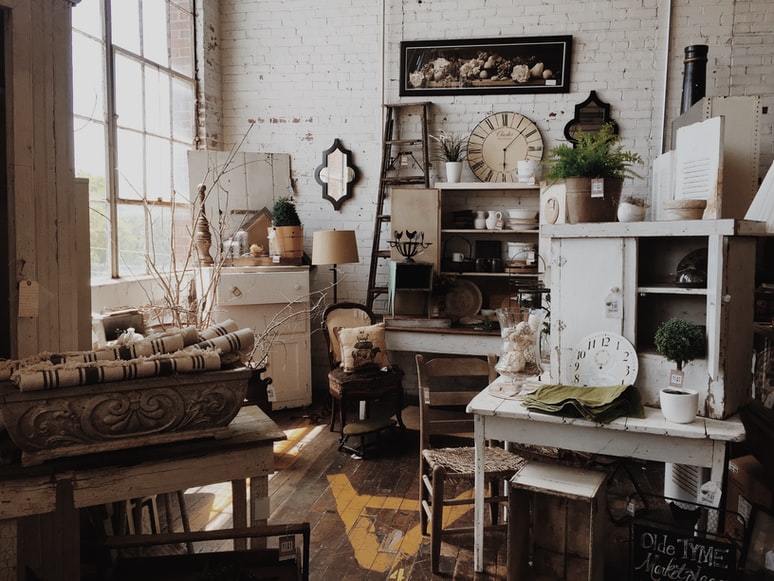
During the height of the pandemic, many furniture stores were delayed as much as 3-4 months in shipping orders for new furniture pieces. That kind of delay might be fine if you are merely browsing and casually shopping, but if you have moved and need to outfit a room quickly upon moving in, a long wait probably will not work for you. Because of these supply chain and shipping issues affecting new merchandise, more and more people have turned to purchasing second-hand items through various channels. Antique and vintage furniture stores have seen an increase in sales, but with many people preferring to limit their in-person shopping, purchases of these items from friends and neighbors has also taken off. Facebook Marketplace is one example of a website that has made secondhand shopping so easy and convenient. Browse for items online, message with the seller for details, pay via an app like PayPal or Venmo, and you may even be able to do a “porch pickup” with no contact at all between you and the seller. This business model is perfect for pandemic concerns.
Whether supply chain issues continue or not, many design experts are predicting that the vintage trend will continue, even if it’s only one or two pieces that are added in to our decor. If you would like to add a vintage statement piece to your home, hit the antique shops and yard sales to look for an heirloom side table to go beside your favorite comfy chair, or even to use in place of a traditional kitchen island. You can further achieve this look in the form of antique lighting fixtures, or vintage china left exposed either in a china cabinet or in open shelving.
Cottage Kitchens
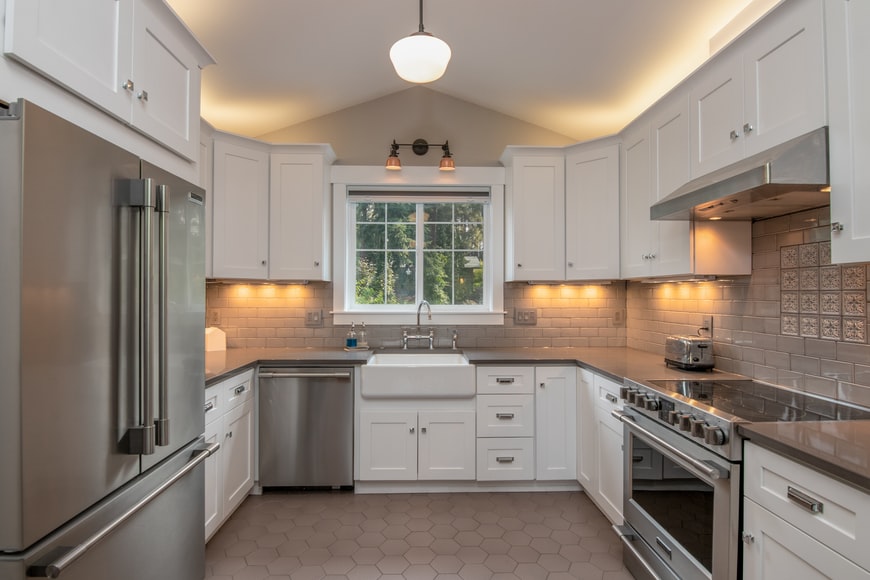
This is a term you might not be familiar with, but a cottage kitchen is simply a smaller kitchen, often in a home without an open floor plan. Common in older homes, the cottage kitchen is cozier and warmer than the expansive modern kitchens that had become the norm shortly before the pandemic hit. With the housing market pushing many younger buyers farther out into the suburbs, and a limited supply of homes meaning more older homes are being snapped up from the market, many buyers are purchasing homes with smaller kitchens than they might like. A few years ago this would mean that shortly after purchase, new home owners would knock out a wall and expand their kitchen to look more like what they envisioned. Instead, more and more homeowners are embracing the smaller kitchen, tucked away from the more common areas of the home.
Does this mean the kitchen is becoming less of a communal focal point of the home? Not at all. Creative seating arrangements, such as stools at an island or bar seating by the window mean that there is still plenty of seating room for guests and family meetings. But with a smaller kitchen you are also making a smaller environmental footprint, something many of us are seeing the value in these days.
Do you have a large open kitchen, but long for something cozier like we have described? We expect to also see trends in redecorating spaces to be cozier and feel warmer and more intimate. Getting rid of the countertop clutter that is unnecessary and/or unattractive is the first step in the process. Stashing rarely used small appliances and knife blocks out of sight will become more desirable, and specialized drawers will be more popular to aid in this. You can then fill the resulting space with items that are both useful and look good on the counter. This includes decorative cutting boards that can double as serving trays, a stack of pretty cookbooks you always reach for, perhaps with one open on a decorative stand, or an attractive tray filled with frequently used ingredients like olive oil and your favorite spices.
Smarter Appliances

We’ve been going crazy over smart, connected appliances and other household items for several years. Our kitchens are now filled with connected refrigerators, ovens and dishwashers, while we have smart thermostats and vacuums throughout the rest of our homes. You’ll see this technology spread to other smaller appliances such as toasters and blenders as well. These devices add a level of convenience to our lives, but we’ve all noticed hiccups in this new science. Today’s versions are smarter than ever though, and with every new version released, more kinks are worked out. Current models are enhanced with AI technology, which better enables integration with your smartphone and devices such as Amazon’s Alexa and Samsung’s Family Hub. With these improvements to integration, you will continue to receive notifications such as when your dryer finishes a cycle or your oven is done preheating, but you’ll also be able to update a grocery list, manage family schedules, mirror shows from your TV on to your refrigerator’s screen, and track food expiration dates, along with much more.
Replacing Backsplash Tile with Slab
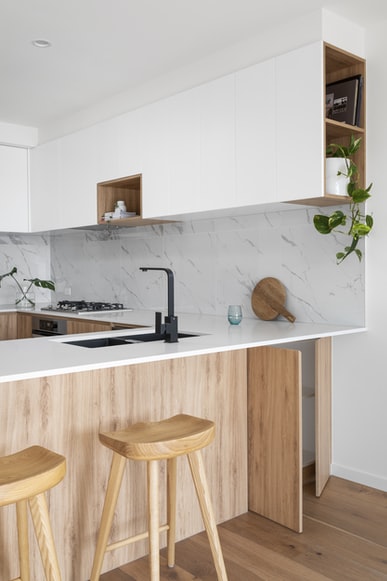
So many DIY projects were started during the pandemic by those of us who found ourselves home more than ever before. With more free time, why not attempt some manageable home improvement projects without having to pay a professional? A favorite project for many involved the kitchen backsplash, with many people choosing to get rid of their tile backsplash and replace it with a countertop style slab instead. A slab backsplash is much easier to clean than tile since it does not use grout, and it allows for a more streamlined and continuous look when the backsplash slab and countertop are made from the same material. The top picks for which material to use are marble and quartz, with the more vein-centric the slab’s design the better.
Green Everywhere
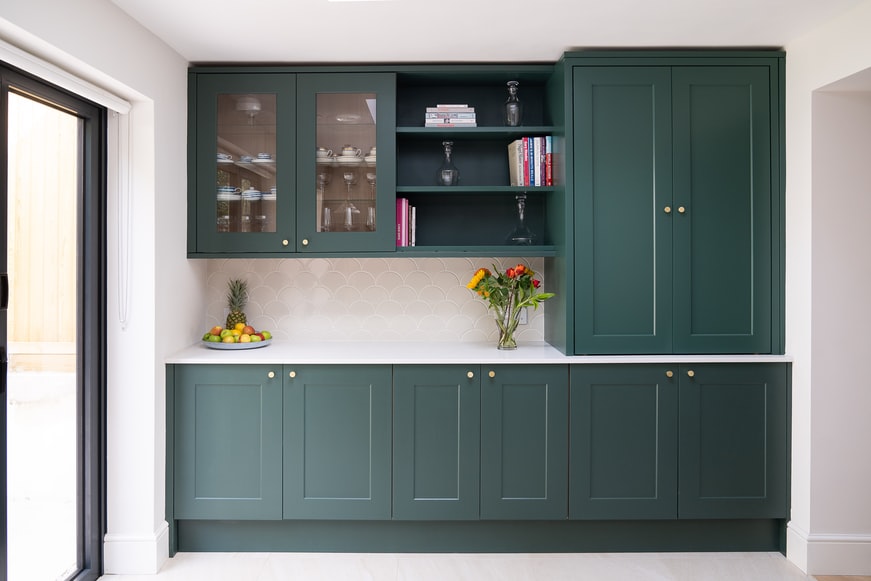
You’ll see dozens of paint and design companies releasing their 2022 Color of the Year, and while these colors come in all shades and hues, it looks like 2022’s overarching color of the year may just be all shades of green. Green symbolizes nature, calmness and tranquility, something most of need a lot more of. In Eastern thought, green is also the color of growth, balance and renewal. It’s no wonder that so many of us want to surround ourselves with green after two years of pandemic anxiety.
How should you incorporate green into your home? You likely do not want to paint an entire room in a bright emerald green, so look for other ways to bring the color into your life. A soft green does work for paint, or if you choose to paint just one accent wall, you can go a little more bold. But green is not meant for paint and walls alone. You can bring the green in the form of textiles such as area rugs and throw pillows, or by purchasing an overstuffed armchair in a green hue. Kitchen and bathroom cabinets can also be repainted in a soft green tone. Be careful not to overdo the color, or mix too many shades of green in one room’s palette. Leaving many of the other focal points in a room in a more neutral color will help keep your green from becoming too overpowering.
Another way people are beginning to incorporate more green into their homes is in the form of kitchen countertops. Verde marble looks just as warm and luxurious as more traditional colors, while adding an overall sense of calmness to the room. If you choose to incorporate green marble into your kitchen, pair it with lighter wood tones. Darker woods such as cherry can give your kitchen a dated appearance.

